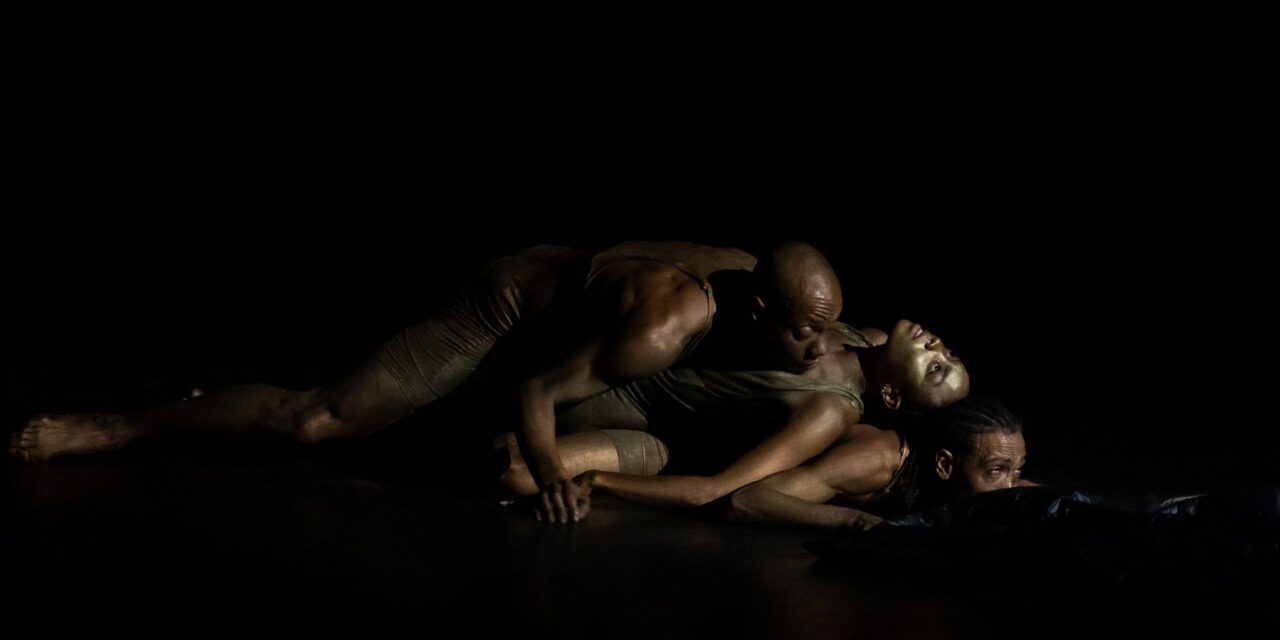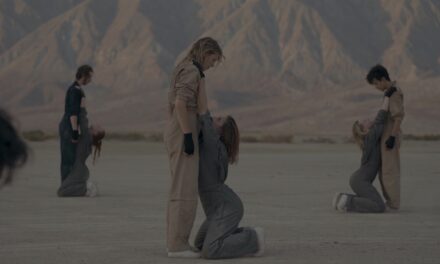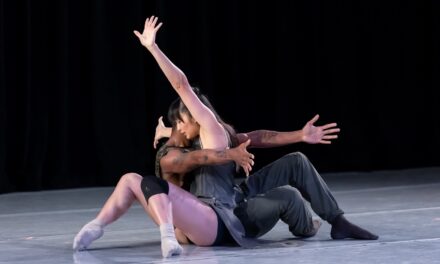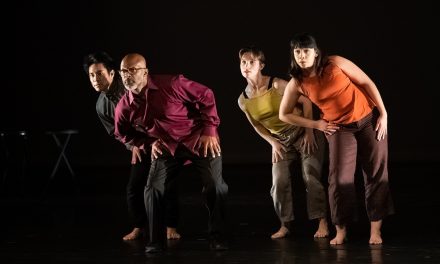The world swells. The soundscape of synths boom and a black tarp adorned in lights grows on the ground. Shamel Pitts’ “BLACK HOLE – Trilogy and Triathlon,” created in collaboration with his Brooklyn-based arts collective TRIBE, alters the theater into an unknown location deep on the other side of the galaxy where movement translates the furthest corners of Pitts’ emotional core.
CAP UCLA presented this final iteration of his BLACK Series triptych on Feb. 15 at the Glorya Kaufman Dance Theater. With performers Tushrik Fredericks and Marcella Lewis, Pitts shares an abstract yet intimate reflection of vitality and collective empowerment with Afrofuturist aesthetics. At times somatic, the multimedia dance piece reconstructs the body by hopping from moments of steady movement to quick and expansive explosions. “BLACK HOLE” is like a triumphant rebirth.
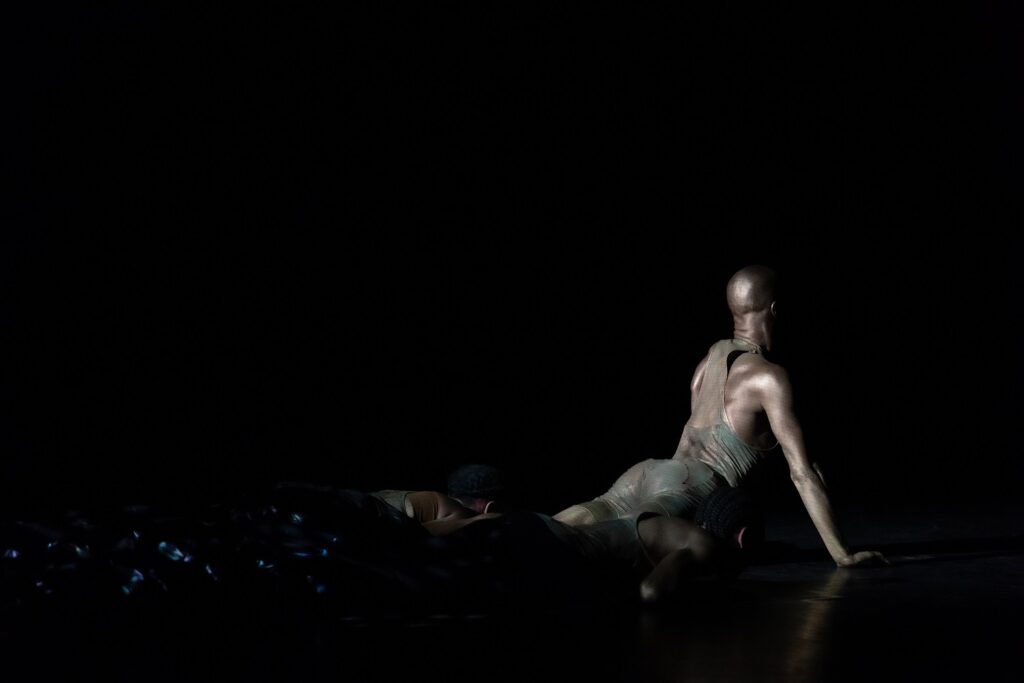
“BLACK HOLE – Trilogy And Triathlon” by Shamel Pitts – Photo by Jason Williams courtesy of CAP UCLA.
The performers enter from underneath a black tarp designed by Naomi Rapaport. Pitts oozes from it, lurking upstage with the strength of his arms alone. The movement quality feels alien and otherworldly. Fredericks and Lewis follow suit. They embrace each other’s presence, forming a singular moving entity shifting through the stage. Here, they learn the possibilities of the body, challenging it one step at a time. They get to their feet.
The choreography is a medley of effort. There are moments of grooves—including a repeated rhythmic arm swing—and staccato steps. Pitts keeps the hour-long piece interesting by attaching and detaching from this groove. He takes advantage of the moments outside it, allowing the often house-influence soundscape (composed by Sivan Jacobovitz) to inspire unexpected flares. In one instance, he frantically pats his back. In another, Lewis breaks the mold of abstraction and performs more balletic extensions and isolations.
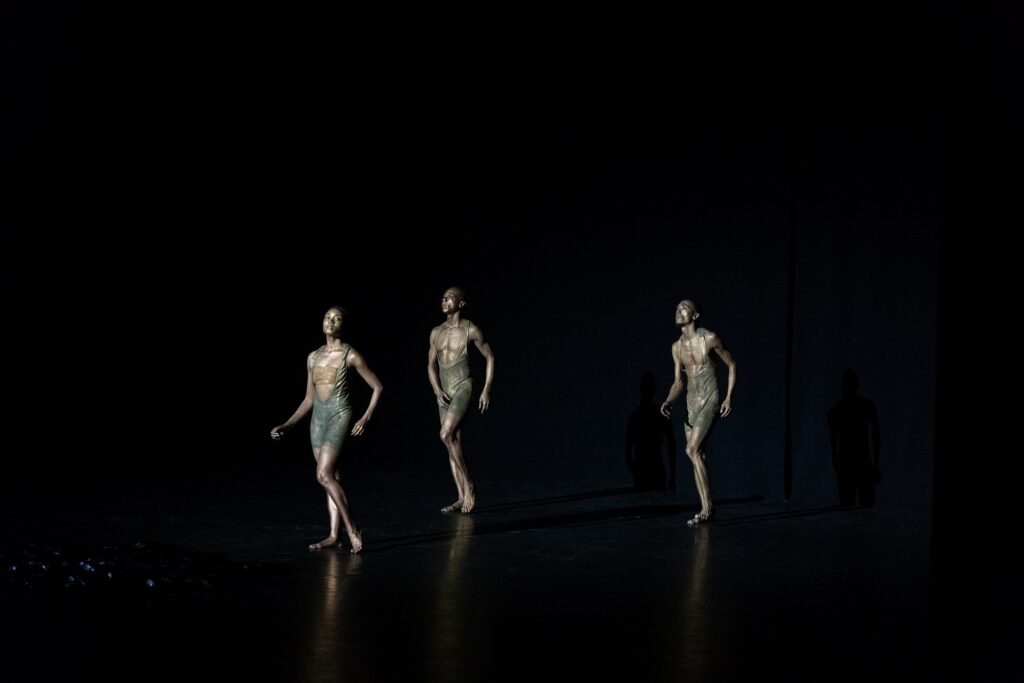
“BLACK HOLE – Trilogy And Triathlon” by Shamel Pitts – Photo by Jason Williams courtesy of CAP UCLA.
With help from the video lights and mapping design by Lucca Del Carlo, the movement is defined by distinct chapters. When the trio finally separate from their unified movement, the lights hovering over the black tarp upstage explode and cover the entire stage, turning the space into an immersive galaxy with no ground, walls or ceiling. It is as if they are floating or losing a sense of space and time in the depths of a warehouse club. Squeaking sneakers echo and Frank Ocean’s “Pretty Sweet” lingers in the background as it slowly grows over the noise. The show has a special ability to mesmerize by immersing all the senses. Just as the work promises, the otherworldly atmosphere is not what it seems. As references like Frank Ocean and Nina Simone enter TRIBE’s world, this outer space performance is grounded to Earth.
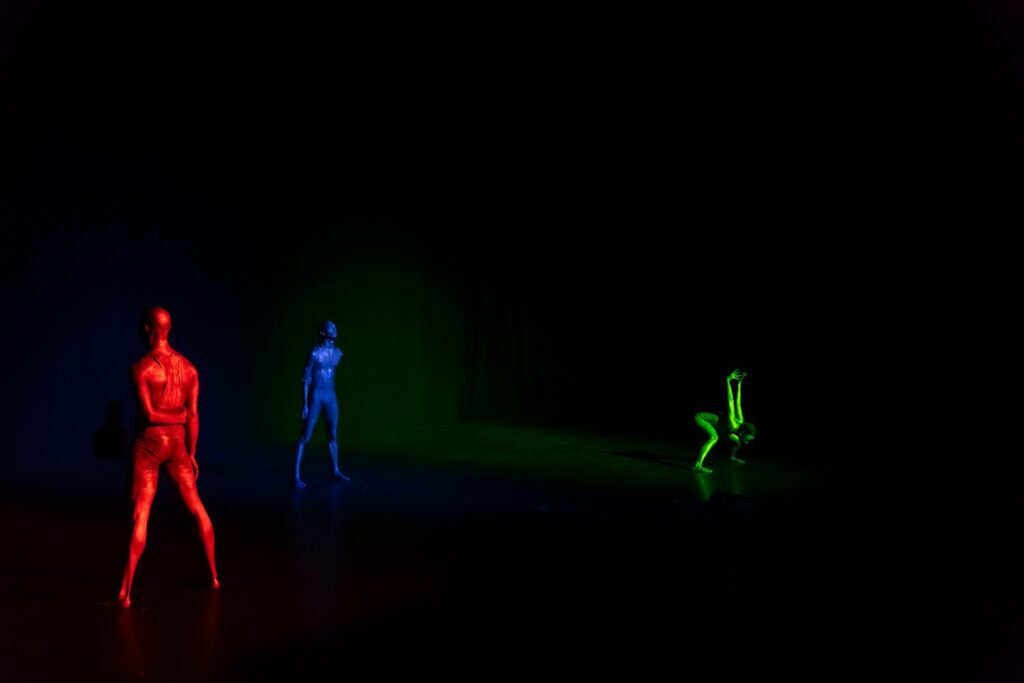
“BLACK HOLE – Trilogy And Triathlon” by Shamel Pitts – Photo by Jason Williams courtesy of CAP UCLA.
The most impactful section is at the core of the piece. One by one, the performers are painted in elementary colors by the lights. Fredericks is painted blue, dancing through Simone’s “Feeling Good.” It is both erratic and controlled, embracing the theme the song provokes. Pitts is painted red, commanding the stage with gestures that suggest a tug-of-war with his introspective thoughts. Lewis is then painted in green light, bringing Pitts’ tug-of-war to the surface by extending her limbs in both directions and letting them rock her to-and-fro. Finally, their lights merge into a brown tone. They collide with each other to create a kaleidoscope of limbs in the light. After shimmering in gold, blue, green and red, the trio enters muddy waters. Yet, there is still beauty in this clash.
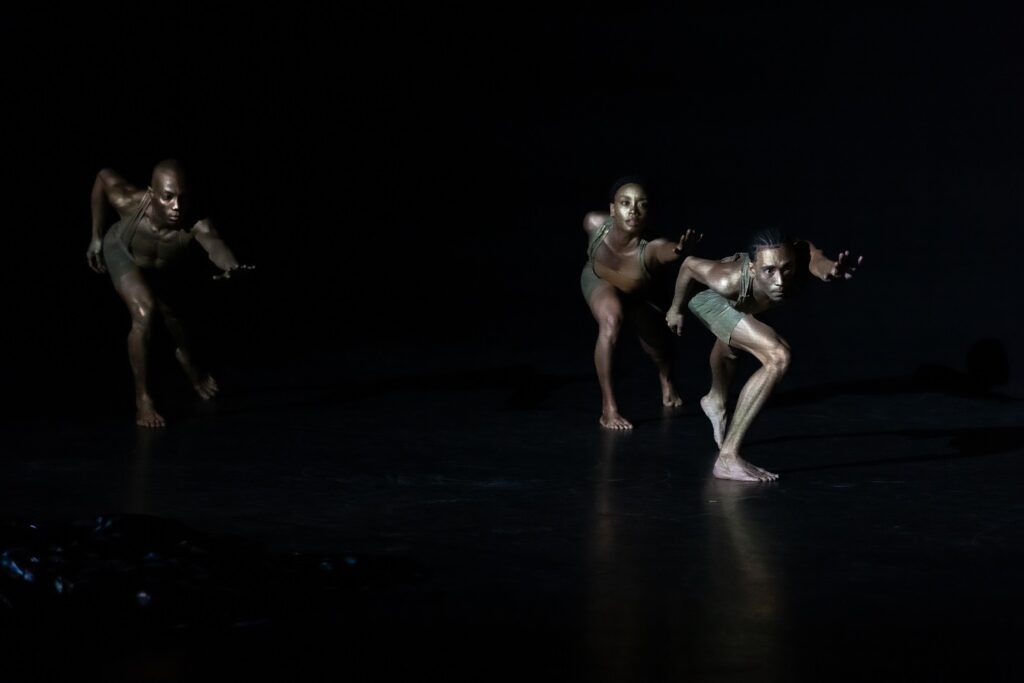
“BLACK HOLE – Trilogy And Triathlon” by Shamel Pitts – Photo by Jason Williams courtesy of CAP UCLA.
“BLACKHOLE” is a strong piece but contains multiple endings. The beginning of the end starts when the black hole theme is in full force. The lights soar to the center where Lewis waves the black tarp. It’s taunting. Fredericks and Pitts run in place, but with the lights zooming to the center, it feels like they’re running at light speed. It only works for so long. They all collide underneath the tarp. It feels like an ending, but then the tarp jerks with punches and stretching limbs. We continue. As the trio embarks on a new journey, movement motifs throughout the piece return. We ebb into a new conclusion, but then the soundscape erupts. While the execution is unclear, Pitts’ vision isn’t. These three punctuations mark a nebulous hurrah to the core attributes of “BLACKHOLE”: body, sound and space. The bodies are consumed, the soundscape takes its final breath and the lights fade.
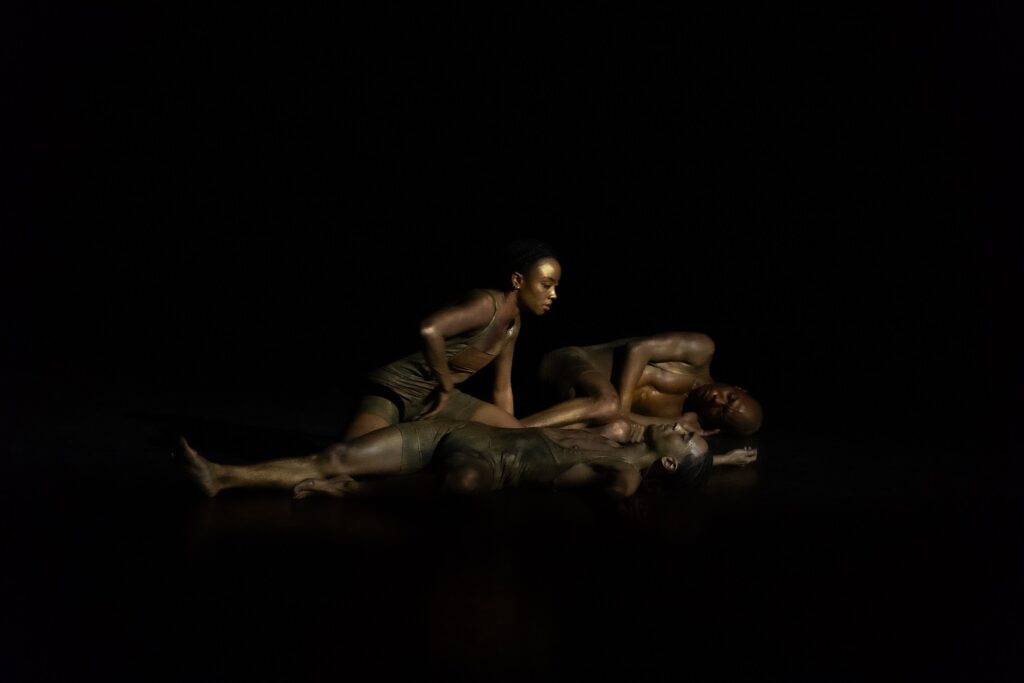
“BLACK HOLE – Trilogy And Triathlon” by Shamel Pitts – Photo by Jason Williams courtesy of CAP UCLA.
“BLACKHOLE” cracks open a world and lets it burst into a prismatic reflection of unity. Once encapsulated, the audience must watch it retreat into the black hole it came from and yearn for a new world just like it — one with progress and care.
For more information about Shamel Pitts, please visit his website.
Written by Steven Vargas for LA Dance Chronicle.
Featured image: “BLACK HOLE – Trilogy And Triathlon” by Shamel Pitts – Photo by Jason Williams courtesy of CAP UCLA.

